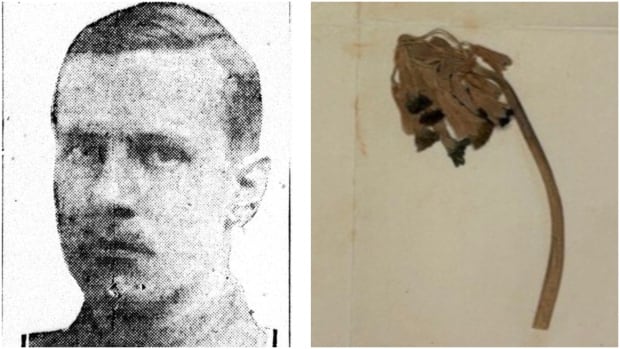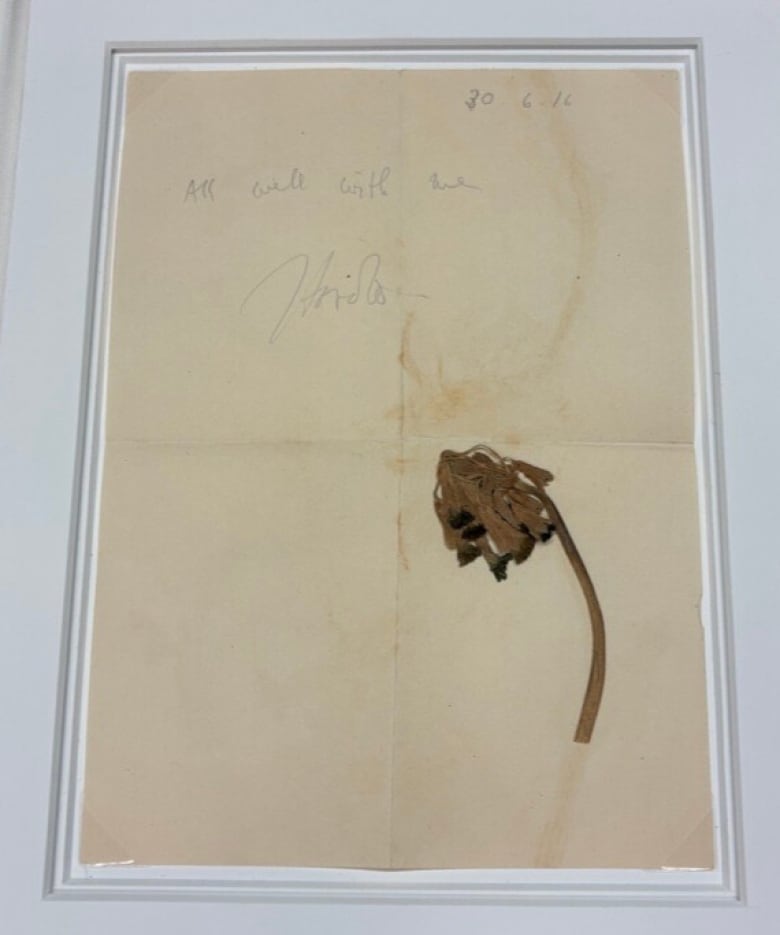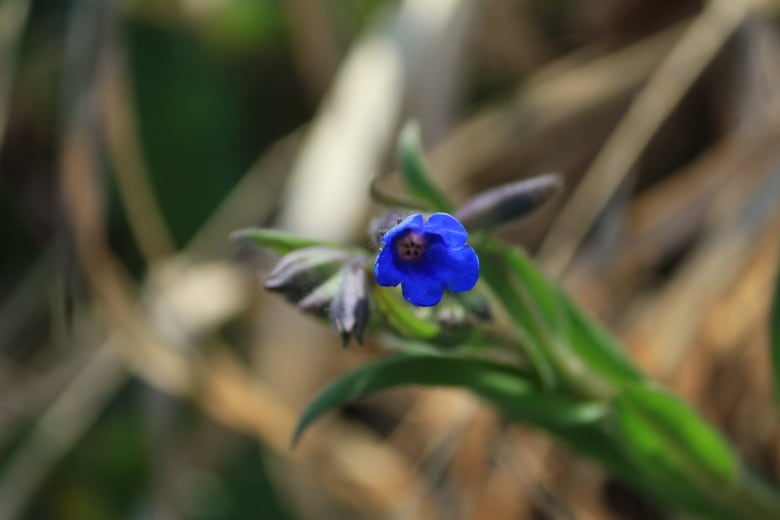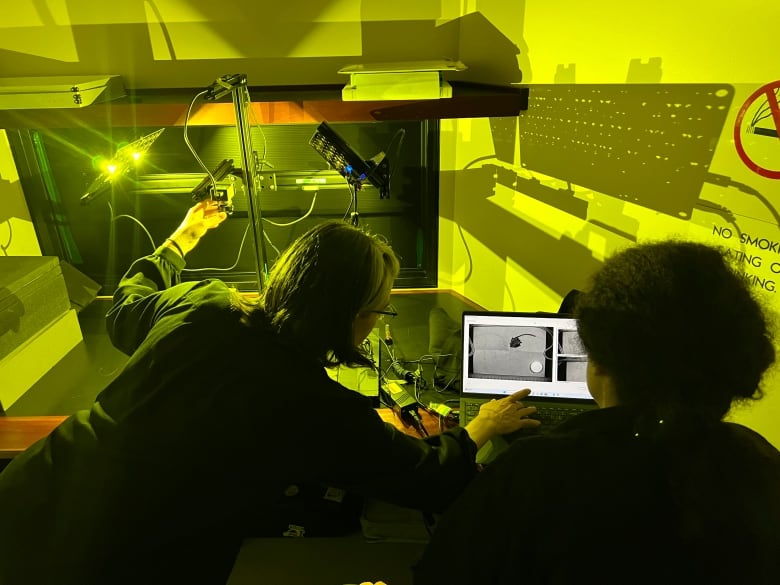
As It Happens6:18Researchers ID flower pressed into WW I soldier’s last letter home
When University of Toronto librarian Loryl MacDonald closes her eyes, she can imagine a young Canadian soldier, filled with nerves and far from home, writing a letter to his family on the eve of one of the bloodiest battles in human history.
Lt. Howard Wrong, a 25-year-old University of Toronto graduate, was studying classics at Oxford University in England when he enlisted with the Lancashire Fusiliers during the First World War.
On June 30, 1916, he wrote a letter from his post in Thiepval, France, to his brother, Murray Wrong, in England, with just four words: “All well with me.” He signed his name, folded the page and tucked within it a small flower.
It was the last his family would ever hear from him. He was last seen one day later, crossing the German front line at Thiepval with a wounded arm. His body was never recovered, but he was presumed to have died that day, along with most of his battalion.
Now, 108 years later, with the help of modern scanning technology and artificial intelligence, researchers at U of T believe they have finally identified the flower — a blue cowslip.
“It made me think about what he could have actually been thinking … reassuring not only his family, but also reassuring himself, and then seeing this beautiful flower in the midst of this horror, and actually plucking it and putting it in the letter,” MacDonald told As It Happens host Nil Köksal.
“When I saw it, I just thought of the humanity there and the beauty there, too, in this war.”

MacDonald is the associate chief librarian for special collections at U of T and director of the Thomas Fisher Rare Book Library. In the two decades she’s worked there, she said she and her colleagues have been trying to identify Wrong’s flower.
She acknowledges that it may seem like an insignificant detail in the story of the Somme, a grisly, months-long battle in France in which more than one million soldiers were killed, wounded or lost, including more than 24,000 Canadians.
Wrong, said MacDonald, is “just one of 24,000 stories.”
“It was important to us to actually understand what the flower was and to centre us where Harold would have been at the time.”
Flowers common in soldiers’ letters
It’s a sentiment that resonates with Stephen Davies, a historian from Vancouver Island University who wasn’t involved in the research.
“These stories are important. They really put a human face to war, remind us that these individuals, in spite of all the hardships they’re going through, are still doing things like sending flowers and pressing flowers,” he told CBC.
“It really brings back that element of humanity that often gets lost when we talk about statistics or names on cenotaphs.”

Davies is the founder of the Canadian Letters and Images Project, a long-running digital archive of letters, diaries and other memorabilia from Canadians who fought in wars. Flowers, he said, are a recurring motif.
He said soldiers often describe battlefield flowers in their letters home. And he’s seen “quite a few” flowers pressed into their diaries and correspondence.
“In the midst of such destruction and death, here is this very simple symbol of life, of the home front, of something that they can relate to, which takes them away from the battle itself,” Davies said.
“I think the families would appreciate that. Many soldiers send souvenirs which are war-related. But the families, I think, would really treasure something so simple as a flower.”
When history meets modern tech
Wrong’s letter has been in the U of T’s possession since the 1960s, donated as part of a package of items associated with the young soldier’s family.
His father, George Wrong, was a renowned U of T historian, and his grandfather, Edward Blake, was a former U of T chancellor and the second premier of Ontario.
CBC was unable to reach Wrong’s living relatives for comment before deadline.

Early in their research, the team found a list, written in 1917 by botanist Arthur William Hill, of flowers observed on the Somme battlefield. But none proved to be a match.
They also asked Helen Cooper, a medievalist scholar at Cambridge University in England and an expert on English flora and fauna. She immediately suspected it was a blue cowslip, so they sought more evidence to back it up.
Enter MISHA (Multi-spectral Imaging System for the Humanities and Archives). The new scanner, developed at the Rochester Institute of Technology in New York, is on loan at U of T’s Old Books New Science lab, where researchers are using it to identify materials from the university’s archives.
The flower, MacDonald said, was “a fantastic opportunity” to put MISHA to use.
The scans allowed the team to see the flower in closer detail. They presented those to botanists and ran the image through the AI plant identifier, Plant.net, and confirmed it was, indeed, Pulmonaria angustifolia, a native European plant also known as blue cowslip.
While not an uncommon flower, it was a fluke Wrong found it when he did, as records show it was blooming usually late that year all over France.
“Being able to finally identify what that flower is sort of brought me, and brought our team, closer to who Harold actually was,” MacDonald said.

